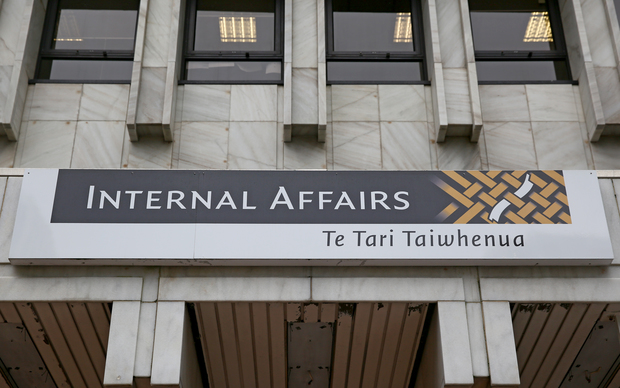White identity-motivated extremism continues to be the leading driver of online content investigated and shut down by Internal Affairs (DIA).
 Internal Affairs Photo: RNZ / Alexander Robertson
Internal Affairs Photo: RNZ / Alexander Robertson
DIA today released its first annual report into online violent extremism content, covering 2021.
The report is in part a result of the Christchurch Call – efforts by governments to eliminate such content online led by New Zealand and France after the 15 March attacks on Christchurch mosques in 2019 – and aims to produce a yearly snapshot of the volume of content investigated and removed.
It shows white identity-motivated extremist ideology accounts for the largest portion of investigated content by far.
Nearly three years after the mosque terror attack, the massacre livestream continued to be shared and promoted, particularly by white-identity motivated extremists, it found.
DIA said it highlighted the huge impact the attacks continued to have on New Zealand’s online violent extremist environment.
Twitter was the biggest source of content referred to the department, and the biggest source of content deemed illegal which it then sought to have removed. However, Twitter did act on all cases of content flagged for removal by DIA.
The second-highest amount of content came from bitchute, a video-hosting service initially set up in the United Kingdom, known for accommodating far-right individuals and conspiracy theorists and hosting hate speech. Bitchute had the highest amount of objectionable content that DIA was “unable to progress” removal for.
There was a big spike in the amount of content investigated in May with 162 urls investigated, which DIA said was attributed to referrals from other agencies.
There were also smaller spikes in August (112) and September (105), with relatively lower numbers in October through December partly due to less proactive scanning by the department in the holiday months.
DIA’s proactive scanning was the biggest source of material, with 261 urls, followed by other government agencies (141), public referrals (131) and non-government organisations (108).
The ratio of material found to be objectionable was also much higher in the first half of the year, with more material found to non-objectionable than objectionable in quarters three and four.
The report said DIA also expected monthly referral numbers to be “consistently higher” in 2022.
